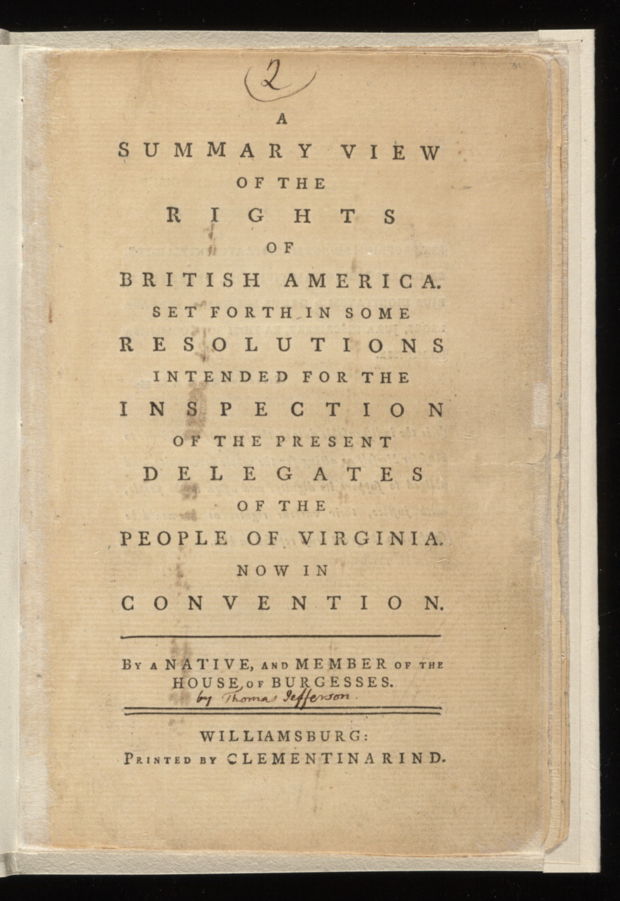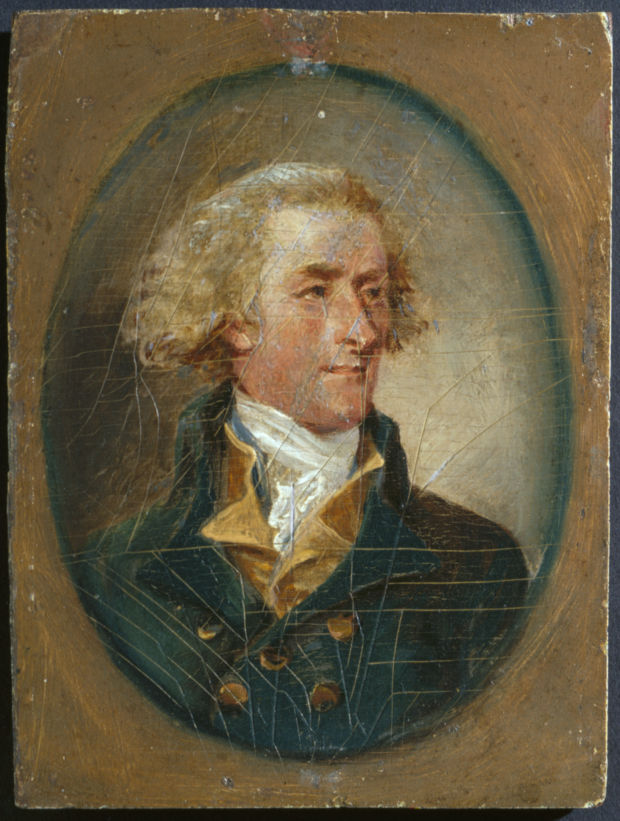Jefferson and the beginning of the American Revolution
Reading Level: Elementary School
From 1775 to 1783, American Patriots fought the British. The war was called the American Revolution. Thomas Jefferson never fought as a soldier. Instead he used powerful words to fight for independence.

This map by Carington Bowles shows the boundaries of the American colonies in 1763 following the French and Indian Wars.
The Beginning: The Colonies Protest
By 1775, there were thirteen British colonies. They had a population of more than 2,700,000 people. Most lived on small farms. They sold wool, cotton and tobacco to Great Britain. They bought cloth, hats, tea and tools from Great Britain.
In 1763, the British ended a war with France. They needed money. The British government placed new taxes on the colonies. The taxes would help pay off their debts. Colonists refused to pay the taxes. They said that they had not voted for the taxes, so they shouldn’t have to pay them.
In 1768 Great Britain sent soldiers (Redcoats) to Boston. The soldiers were to punish the city for not paying the taxes. In 1770, Redcoats fired on a mob, killing five colonists. It was called the Boston Massacre. In 1773, colonists threw 342 tea chests into the Boston Harbor. They were protesting the tax on tea. The British government closed Boston Harbor. They made the citizens of Boston follow harsh rules. The colonists called the rules the “Intolerable Acts”.

Title page for Jefferson’s copy of his A Summary View of the Rights of British America, which he wrote in 1774.
Thomas Jeffersons Views
Thomas Jefferson had strong views on independence. As a farmer in the ‘wilderness’ of Virginia, he knew that people could govern themselves. Jefferson wrote opinions on the colonists’ struggles against Great Britain. Jefferson said that the colonists were a free people claiming their rights. People outside of Virginia read his opinions. Many agreed with Jefferson. They also recognized his skills as a writer and thinker.
The First Continental Congress
Before the Revolutionary War, the colonies had no central government that met in America. State governments were just being set up. But the state governments reacted to Great Britain’s harsh taxes and rules. They sent delegates to Philadelphia to meet and discuss the problems. The delegates called themselves the First Continental Congress.
The delegates wanted the British Government to end its harsh taxes and rules. They urged colonists to stop buying British goods. They urged them to form militias (local armies of citizens). Gunsmiths made muskets. Firearms and ammunition were secretly stored in barns.
The Revolution Begins
On April 19, 1775, British Redcoats marched on Lexington, Massachusetts. Eight colonists were shot or wounded. The Redcoats marched on to Concord. The militiamen (citizens trained as soldiers) were outnumbered. The British fired, and the militiamen fired back, aiming at the red coats. The British panicked and ran. The militiamen chased after them.
In all, ninety-four militiamen died or were wounded. 272 Redcoats died or were wounded or missing. It was the beginning of the American Revolution. Messengers spread word of the fight in Massachusetts. Anger and fear raced through the other colonies. The message took about two weeks to travel to Virginia. Thomas Jefferson wrote that a “frenzy of revenge seems to have seized all ranks of people.”
The Second Continental Congress
In May 1775, a Second Continental Congress met in Philadelphia. In June, Thomas Jefferson arrived. He was a delegate from Virginia. The delegates from Virginia also included George Washington and Richard Henry Lee. Congress quickly made a plan to raise troops and send them to Boston. Congress picked Jefferson to write an explanation of the colonists’ reasons for declaring war. Congress picked George Washington as head of the armies.
Great Britain felt that the colonists had forgotten “the power that has protected and supported them.” They believed that most colonists supported British rule. They thought there were only a few Patriots. They gathered an army of 20,000 to crush the colonists. They also seized American ships.
The Second Continental Congress voted to form a navy and find money to help pay for a war. In April 1776, they closed seaports to British ships. They started a Continental army. This included regiments (group of soldiers) raised by Congress and regiments from the states.

John Trumbull did this study of Thomas Jefferson for a series of paintings on the American Revolution. Although he first met Jefferson in 1786, Trumbull aimed to portray Jefferson as he might have looked in 1776, at 33 years old.
Thomas Jefferson: Patriot
Thoughts of war divided the colonies. A third was loyal to Great Britain. They were called Loyalists. The rest, like Thomas Jefferson, were patriots. He believed the colonies should be independent.
On Jan. 9th Thomas Paine wrote Common Sense. It was written to the American people. Paine said that government should serve the people, not oppress them. He wrote that “the last cord is now broken” between America and Great Britain. His words excited more colonists. Did they dare dream of liberty?
Thomas Jefferson was not present in Congress from Dec. 28th to May 14th 1776. His mother was ill. She died March 31 1776. Jefferson became ill soon afterward. But the message of Common Sense reached Jefferson in Virginia. On May 15th, Virginia voted for independence.

